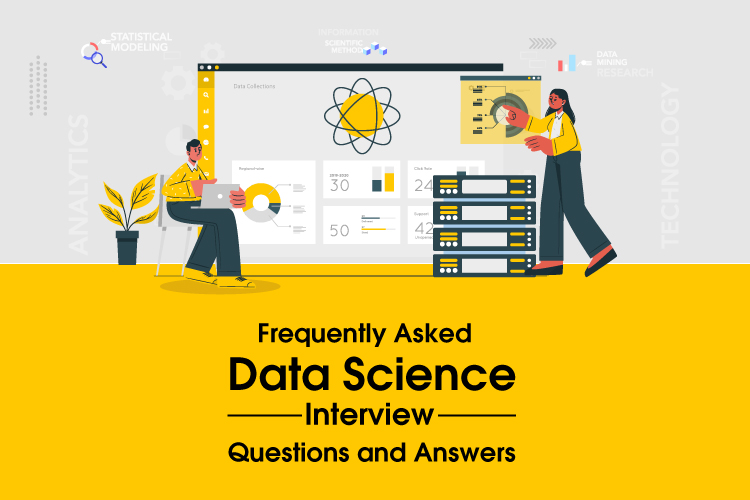- June 28, 2021
- nschool
- 0

Frequently Asked Data Science Interview Questions and Answers
Data Science is one of the most well-known and widely used technologies in the world today. Professionals in this industry are being hired by major corporations. Data Scientists are among the highest-paid IT professionals due to strong demand and limited availability. The most frequently asked questions in Data Science job interviews are covered in this Data Science Interview Preparation blog.
- Tell me about Data Science in your own words?
- Under coverage bias
- Selection bias
- Survivorship bias
- Drawing randomly with replacement from a set of data points or using as subsets of accessible data to estimate the accuracy of sample statistics
- When running appropriate tests, substituting labels on data points
- Using random subsets to validate models
- You want your data model to change over time as data streams are processed through infrastructure.
- The source of the underlying data is shifting.
- If it’s a case of non-stationarity,
- Random Forest
- KNN
- Linear regression
- Logistic regression
- Before picking important variables, remove the correlated variables.
- Select variables that are dependent on the p values using linear regression.
- Backward, forward, and stepwise selection are all options.
- Use Xgboost, Random Forest, and a variable importance chart to plot your results.
- Calculate the information gain for the provided set of features and choose the top n features based on the results.

